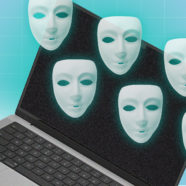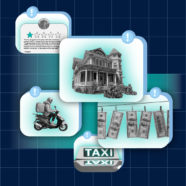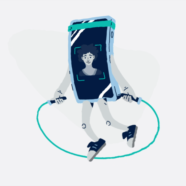- #all
- #banking
- #biometrics
- #business
- #culture
- #digital identity
- #elections
- #ethics
- #facial recognition
- #fingerprint recognition
- #government
- #iris recognition
- #NIST
- #onboarding
- #online elections
- #technology
- #UX
- #voice recognition

How eKYC can make sharing economy apps safer
Mandatory in highly regulated fields like banking and communications, the Know Your Customer (KYC) process is a crucial part of onboarding for many companies. But would it also enhance trust on sharing economy platforms? We explore how electronic KYC that uses biometrics would make it easy, effortless and safe for both platforms and users.

Digital anthropologist Giles Crouch: “We use verifiable identities in the real world, it should be the same in the digital one.”
A Identity is a fuzzy thing. It is constantly changing as we grow up: child, student, parent, worker… each time we join different social groups in our lives, we find ourselves with a new kind of identity. And with technology, identity is no longer restricted to the offline world. So what does it mean, to have a digital identity? And why do we need to have a system to verify it? about culture, technology and identities – real and digital ones.

Verified social media: How can biometrics tame hate, hoaxes and fraud caused by anonymity?
Today's easy anonymity on social media creates an open avenue for scammers, cheaters and bots. Could biometric verification be the way to make these platforms friendlier and more “social” again? We explore the topic with Ján Lunter, CEO of Innovatrics, who thinks biometrics is key to social media security and safety.

Five threats in sharing economy apps and how biometrics could help fight back
Sharing economy platforms such as Uber or Airbnb should always have control over who is using the platform and how. However, in some cases, fraudsters and criminals are able to take advantage of sharing economy services and put the safety of users and the reputation of the platforms at serious risk. Read about five threats and scams that have occurred on sharing economy platforms and how the use of biometric technology could have prevented them.

How biometric identity verification protects passengers using
ride-hailing apps
To get home one night, you order a taxi through a ride-hailing app. You don’t check who your driver is because you don’t have to. With driver face verification and liveness check algorithms, you know that the ride-hailing app continuously verifies thousands of drivers, making all the rides you take safe.

“Thanks to powerful servers, training a face recognition algorithm now takes just ten days instead of a year,” says R&D lead Jakub Sochor
For decades, fingerprint recognition has been the holy grail of secure biometric authentication. Yet, with the rapid progression and widespread acceptance of facial recognition, is there a new frontrunner?

Is facial recognition helping or hurting law enforcement?
While the majority of people in the United States approve of the police using facial recognition technology, experts warn that some may be relying on it too heavily, and that the level of human involvement still required cannot be underestimated.

Former NYPD inspector Joseph Courtesis:
“We create less bias when we use facial recognition algorithms in our work.”
Concerns about biometric recognition algorithms often come down to the issue of tackling racial or gender bias.

Seeing past the marketing fluff: How to identify trustworthy biometric providers
Today, the main risk of using biometrics is not inaccuracy, but ensuring the protection of sensitive personal data. Any potential intrusion of privacy, real or perceived, risks the reputation of the companies using the technology, and has the potential to seriously damage customer trust.

“This technology has helped in so many cases. I hope it will be used even more,” says a liveness check expert Peter Molčány
Videocalls have been a foolproof standard for liveness checks, but they are expensive, unnecessary and difficult to scale.








